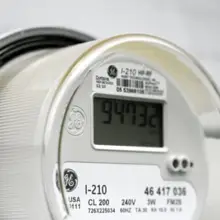Household electricity bills in the United States have jumped by 10% since Donald Trump re-entered the White House, according to a new report. Researchers point to the president’s active support for data centers and a curtailment of clean energy projects as drivers of these rising costs.
Trump tariffs and green energy rollbacks push household electricity bills up 10%

Key Takeaways:
- Household electricity bills are up by 10%.
- President Trump’s data center boosterism is cited as a contributing factor.
- Clean energy projects have been rolled back, impacting energy costs.
- The analysis arrives amid ongoing national energy debates.
Introduction
Households across the United States have experienced a 10% jump in their electricity bills since Donald Trump returned to the White House, a new report has revealed. The findings link this increase to policy choices that prioritize data center expansion while rolling back renewable energy initiatives.
Policy Impact
One central theme highlighted by the report is the administration’s focus on boosting data centers. These facilities require large amounts of electricity, placing additional demand on the grid. By favoring such high-consumption projects, coupled with tariffs that affect energy pricing, the government indirectly contributes to higher monthly bills for everyday Americans.
Clean Energy Cuts
The rollback of clean energy funding and initiatives is another factor cited in the study. By limiting investment in renewable sources, long-term cost reductions that might have come from solar or wind power have not fully materialized. As a result, the reliance on traditional energy sources continues to climb, pushing consumer rates upward.
Broader Energy Landscape
These findings emerge amid a larger conversation about the nation’s overall energy policy. Advocates of green energy have argued that consistent support and research can stabilize rates, reduce dependence on fossil fuels, and mitigate long-term costs. However, the current administration points to immediate economic benefits in funding large-scale infrastructure, such as data centers, which can stimulate job growth in certain regions.
Conclusion
As households face a 10% hike in their electricity expenses, questions remain about how continued data center growth and reduced investment in renewables will shape the U.S. energy market. The report underscores the importance of balancing immediate initiatives with long-term strategies to ensure American families are not overburdened by rising energy costs.











